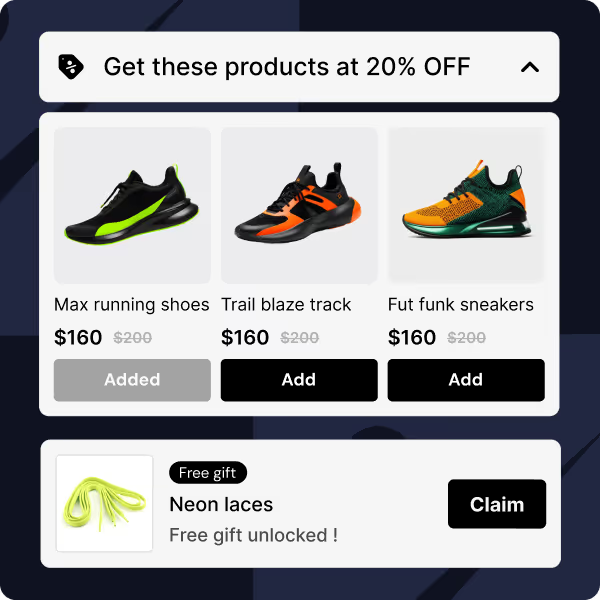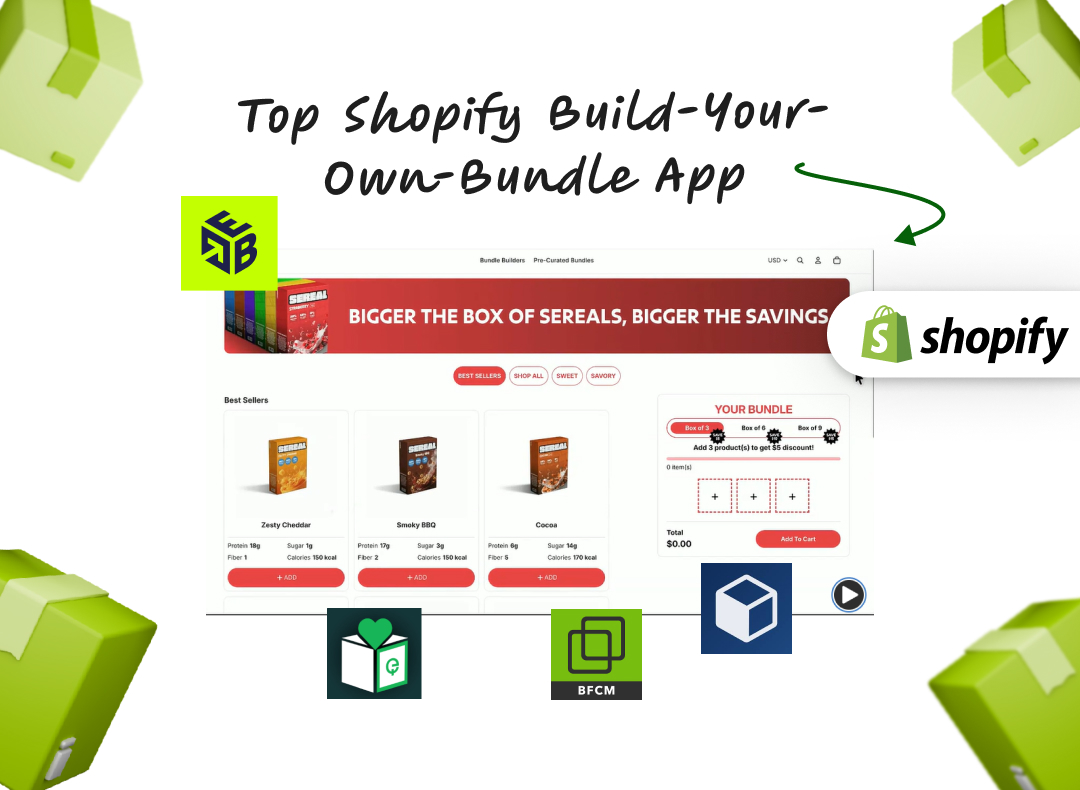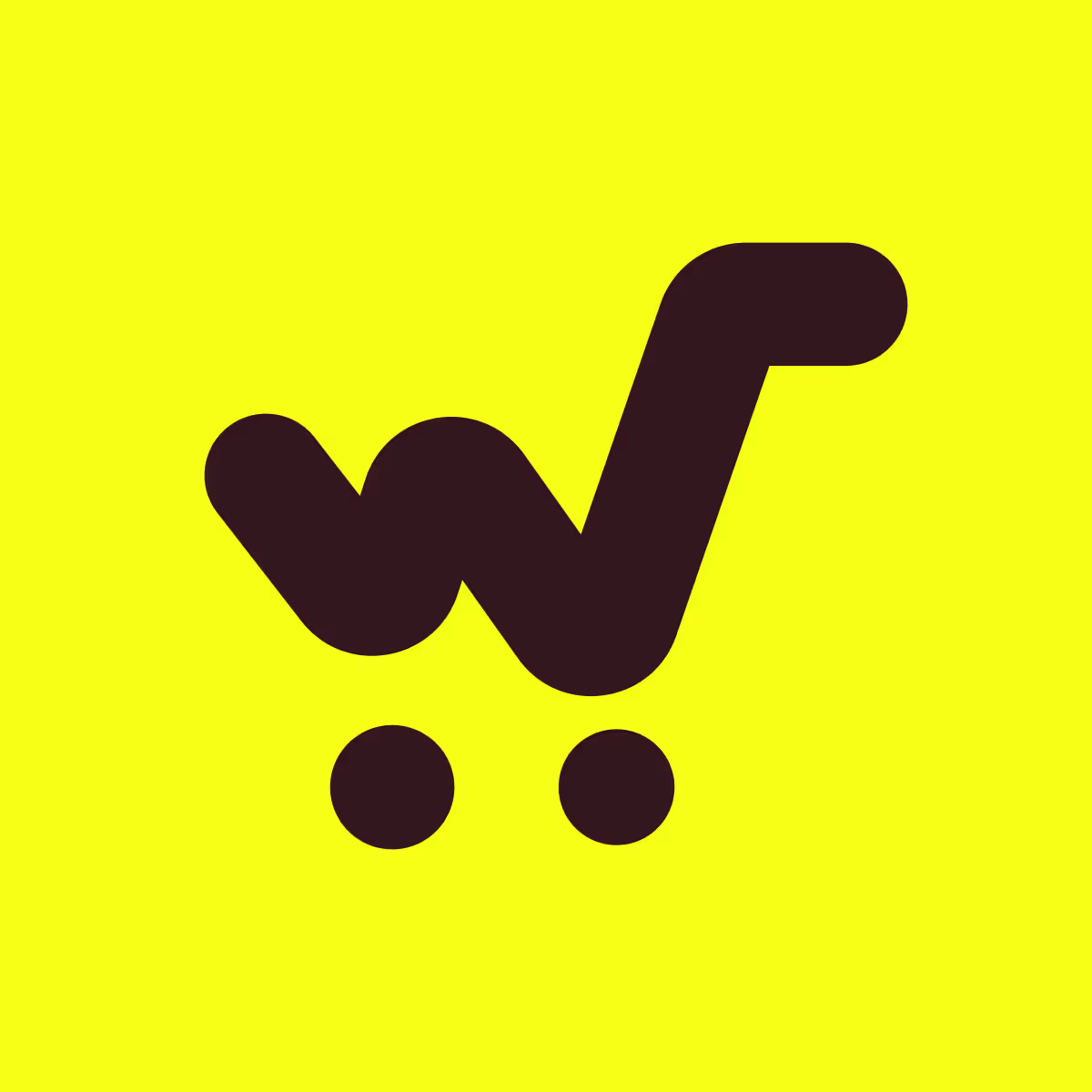Introduction
The holiday season is the busiest time for eCommerce stores, filled with both opportunities and challenges.
Between rising ad costs and intense competition, brands need smart and creative strategies to stand out.
Whether you run a Shopify store or a standalone eCommerce brand, planning your campaigns early and aligning them with customer intent can make all the difference.
According to Shopify’s 2024 holiday report, global merchants generated over $9.3 billion during Cyber Week, proving how powerful well-timed campaigns can be.
From gift guides and bundle deals to loyalty rewards and festive design, your strategy should focus on helping customers shop easily and joyfully.
Here’s how to make your holiday marketing plan simple, scalable, and profitable.
Why Holiday Marketing Matters for eCommerce
The holiday season contributes nearly 30–40% of annual eCommerce revenue for many retailers.
Consumers are not just looking for discounts; they’re searching for convenience, inspiration, and emotional connection.
Platforms like Shopify make it easier to manage festive campaigns through automation, discount scheduling, and gift-card features.
A well-planned holiday marketing strategy ensures you attract new buyers and retain existing ones through thoughtful engagement.
Here’s a quick breakdown of why the season matters:
| Factor |
Why It’s Important |
Example |
| Higher Traffic Volume |
Online shopping peaks from October to December |
Shopify recorded a 4.2% YoY increase in BFCM 2024 sales |
| Increased Purchase Intent |
Shoppers actively look for gifts and deals |
Keywords like “holiday gift ideas” surge in Google Trends |
| Emotional Appeal |
Consumers spend more on personalized, meaningful gifts |
Brands using emotional storytelling see up to 20% higher engagement |
| Loyalty Opportunity |
Repeat customers return for festive offers |
Gift cards and referral programs build long-term retention |
In short, holiday marketing isn’t just about selling—it’s about connecting.
By aligning offers, design, and messaging around festive intent, you can turn holiday shoppers into loyal customers.
Plan Early: When to Start Your Holiday Marketing Campaigns
Early planning gives your eCommerce store a major advantage during the festive rush.
Most successful Shopify and online stores begin their holiday marketing setup at least 2–3 months in advance.
Starting early helps you test campaigns, optimize performance, and avoid last-minute website issues.
According to StackAdapt’s 2025 Holiday Trends, nearly 21% of shoppers begin gift shopping as early as summer, meaning your awareness campaigns should go live by September.
Here’s how you can map your preparation timeline effectively:
| Timeline |
Focus Area |
Action Steps |
| August – September |
Planning & Setup |
Analyze last year’s data, create product bundles, finalize discounts, and ensure site speed readiness. |
| October |
Awareness & Engagement |
Start teaser campaigns, send early-bird emails, and update website banners. |
| November |
Conversion Stage |
Run main campaigns for BFCM and early December shoppers; highlight flash deals and free shipping offers. |
| December – January |
Retention & Post-Holiday Sales |
Offer loyalty rewards, promote gift cards, and send personalized thank-you campaigns. |
This approach ensures that each phase—from discovery to post-purchase—is optimized for conversion.
Shopify users can automate many of these steps using built-in features like discount scheduling, email workflows, and Shopify Flow for event triggers.
For general eCommerce websites, tools like Mailchimp, Klaviyo, and Google Ads Manager can help replicate the same effect.
The key is to build awareness early and maintain consistency across channels until your holiday campaigns peak.
Offer Irresistible Deals and Discounts
The holiday season is the perfect time to attract shoppers with value-driven offers.
Customers are actively searching for discounts, early-bird deals, and special gift promotions.
To stand out, your offers should create urgency and make purchasing feel rewarding, not rushed.
Shopify reports that stores offering time-limited or exclusive deals see up to 35% higher conversions during the festive period.
Types of Holiday Offers That Convert
You don’t need to run massive discounts to make an impact—focus on smart, strategic offers that suit your margins.
Here’s a simple comparison to guide your choice:
| Offer Type |
Description |
Why It Works |
Example |
| Early Access Sale |
Give loyal customers early entry to discounts |
Builds anticipation and loyalty |
“VIP 24-Hour Holiday Preview” |
| Flash Sale |
Limited-time deals for 24–48 hours |
Creates urgency and FOMO |
“Ends Tonight: 25% Off All Gifts” |
| Tiered Discounts |
Offer more savings for larger carts |
Increases average order value |
“Save ₹500 on ₹3,000+ Orders” |
| BOGO Offers |
Buy one, get one free or 50% off |
Encourages gifting and bulk buying |
“Buy One, Gift One Free” |
| Free Shipping Windows |
Offer free delivery for a short duration |
Removes hesitation at checkout |
“Free Shipping All Weekend” |
Tips to Execute Deals Smoothly
Keep your discounts transparent and easy to apply—complex codes frustrate shoppers.
Automate your sale activation and expiry using Shopify Launchpad or native CMS schedulers.
Feature banners on your homepage and product pages to highlight ongoing offers.
For eCommerce brands beyond Shopify, syncing offers across Google Ads, Meta, and email ensures consistency.
Example: Simple Pre-Holiday Offer Schedule
| Date Range |
Offer Type |
Messaging Idea |
| Oct 15–25 |
Early Access Sale |
“The Holiday Preview Is Here: Shop Before Everyone Else” |
| Nov 25–Dec 1 |
BFCM Sale |
“Biggest Festive Sale of the Year – Ends Cyber Monday” |
| Dec 10–20 |
Free Shipping Week |
“Still Time to Shop: Free Delivery on All Gifts” |
| Dec 21–31 |
Gift Card Push |
“Running Late? Send a Digital Gift Card Instantly” |
Strong discounts grab attention, but how you present them shapes your success.
Bundle deals, festive packaging, and curated collections can take your campaigns a step further.
Bundle and Gift Strategies
Bundles and gift sets simplify decisions for holiday shoppers and increase average order value for your store.
Instead of selling individual products, combine complementary items into curated collections.
This not only saves customers time but also helps them feel they’re getting more value for their money.
According to ConvertCart’s 2025 Holiday Report, themed gift bundles generate up to 22% higher conversion rates than standalone products.
How Bundling Boosts Sales
Bundled products appeal to the “gift-giver mindset.”
During the holidays, buyers are less price-sensitive if they perceive a set as more thoughtful or premium.
Here’s how effective bundling impacts your bottom line:
| Type of Bundle |
Example |
Benefit |
| Themed Bundles |
“Winter Wellness Kit” or “Holiday Skincare Set” |
Helps customers shop by theme, not category |
| Price-Based Bundles |
“Gifts under ₹999 / $25” |
Makes shopping faster and budget-friendly |
| Occasion-Based Bundles |
“Secret Santa Essentials” or “Home Décor Picks” |
Creates urgency around events or gatherings |
| Build-Your-Own Bundles |
Customers choose 2–3 products |
Personalization improves satisfaction and retention |
How to Set Up Gift Bundles Effectively
If you’re using Shopify, create dedicated collection pages for “Holiday Gifts” with filters by price or recipient.
Tools like Easy Bundles by SkaiLama make it easier to let customers mix and match their products without code.
Highlight bundled savings in both product titles and images — for instance, “Holiday Glow Set – Save 20%.”
Include cross-sell recommendations at checkout to nudge higher-value purchases.
Gift Cards for Last-Minute Shoppers
Gift cards are a lifesaver during the last stretch of the holiday rush.
They offer flexibility for both the buyer and the recipient.
Use Shopify Gift Cards or GiftKart integrations to create festive designs and quick-purchase options.
A quick comparison to see how gift cards support your store goals:
| Gift Card Type |
Ideal Use |
Platform Option |
| Physical Gift Cards |
In-store or hybrid stores |
Shopify POS or WooCommerce |
| Digital Gift Cards |
Online stores and last-minute sales |
Shopify Gift Card / GiftKart |
| Bulk Corporate Gift Cards |
B2B or corporate gifting |
Custom Shopify API setup |
Create Holiday-Themed Store Experiences
The way your store looks during the holidays has a direct impact on how customers feel about shopping with you.
A festive, easy-to-navigate website can instantly boost engagement and conversion rates.
According to Shopify’s Holiday Commerce Report, merchants who updated their storefronts with seasonal visuals saw a 19% increase in click-through rates across banners and homepages.
Design a Festive, Yet Simple Storefront
Add subtle holiday touches without overwhelming your visitors.
You can use color palettes inspired by the season—reds, golds, greens, or even minimalist winter whites.
Update your homepage hero section to highlight your best offers and bundles.
Here’s how you can structure your design updates:
| Area |
Holiday Optimization Tip |
Example |
| Homepage |
Add festive banners and featured gift collections |
“Shop Our Holiday Gift Picks” |
| Logo/Icons |
Add small snowflakes or ribbons for a limited time |
A subtle gold sparkle around your logo |
| Product Pages |
Showcase trust badges and shipping cutoffs |
“Order by Dec 18 for Guaranteed Delivery” |
| Checkout Page |
Simplify checkout steps and add gifting notes |
“Add a Gift Message at Checkout” |
| Footer Section |
Add links to gift guides and return policies |
“Holiday Returns Extended Till Jan 15” |
Build a Smooth and Emotional User Experience
Shoppers want reassurance during the holidays — that products will arrive on time and their orders are secure.
Add estimated delivery dates, live chat, and clear return policies to your key pages.
Personal touches like “Gift Wrapping Available” or “Include a Note” create an emotional connection.
If you’re using Shopify, tools like Checkout Wiz can simplify checkout and reduce drop-offs by allowing discounts and shipping logic directly within the checkout flow.
For other eCommerce setups, you can use tools like Zendesk Chat, Hotjar, or Tidio to keep real-time support accessible.
Example: A Holiday-Ready Homepage Layout
| Section |
Suggested Feature |
Purpose |
| Hero Banner |
“Limited-Time Holiday Offers” CTA |
Instant attention and urgency |
| Gift Collection |
Curated products by theme |
Easy navigation |
| Testimonials |
Highlight festive shopping experiences |
Builds trust |
| Countdown Section |
“Ends in 2 Days!” clock |
Boosts urgency |
| Footer Links |
Holiday help desk, gift cards, policies |
Reduces uncertainty |
A festive design doesn’t just make your store look appealing — it builds trust and excitement.When customers see that your site feels ready for the holidays, they feel ready to buy.
Run Engaging Holiday Campaigns Across Channels
Reaching customers across multiple channels ensures your brand stays visible throughout the holiday season.
From social media and email to influencer partnerships and paid ads, your message should feel festive, consistent, and personal.
According to Omnisend’s 2024 report, brands that combined email, SMS, and social campaigns saw a 13% higher order rate compared to single-channel efforts.
Email Marketing: Still the Strongest Driver
Email remains the top-performing channel for festive campaigns.
Segment your audience based on their behavior—first-time buyers, repeat customers, or abandoned-cart visitors.
Keep subject lines short and holiday-themed:
“Your Early Access Gift Awaits” or “Still Time to Shop — Free Shipping Ends Tonight.”
To make your campaigns stand out:
- Add gift guides inside your emails.
- Use countdown timers for urgency.
- Personalize recommendations based on past purchases.
Example Table – Holiday Email Flow Plan
| Campaign Type |
Timing |
Goal |
Example Subject Line |
| Early Access Email |
Late Oct |
Build excitement |
“Holiday Deals Start Early for You” |
| BFCM Series |
Late Nov |
Drive conversions |
“48 Hours Only: Biggest Sale of the Year” |
| Last-Minute Reminder |
Mid-Dec |
Capture late shoppers |
“Still Looking for Gifts? Shop Before Dec 20” |
| Post-Holiday Email |
Early Jan |
Retain customers |
“Thank You for Shopping — Here’s a Reward” |
Social Media and User-Generated Content
Social media is where your brand can build emotional connection.
Run giveaways, countdown posts, or “share your holiday look” campaigns.
Encourage buyers to tag your brand with a holiday hashtag—like #MyHolidayFinds or #ShopLocalGifts.
According to Wix’s 2025 Holiday Marketing Study, campaigns featuring authentic user content see up to 3x more engagement than brand-only visuals.
Keep posts consistent across Instagram, TikTok, and Pinterest, and ensure your captions highlight urgency or exclusivity.
SMS Marketing: Fast and Personal
SMS works best for limited-time offers and last-minute updates.
Send short, clear messages with direct links to your holiday page.
For example:
“⏰ Last Day! 20% Off Holiday Bundles — Ends Midnight. Shop Now: [link]”
If you’re on Shopify, tools like Klaviyo SMS or Postscript make it easy to schedule and segment messages.
Always limit to 1–2 messages per week during the peak season to avoid fatigue.
Influencer and Partner Campaigns
Partnering with creators adds credibility and reach to your holiday promotions.
Focus on niche-aligned influencers rather than those with the largest followings.
For example, a skincare brand could work with lifestyle creators on Instagram for “Holiday Glow Guide” content.
Offer them unique discount codes or early product drops.
Cross-Channel Campaign Planning Matrix
| Channel |
Strength |
Best Use Case |
Example Campaign |
| Email |
Direct communication |
Exclusive deals & gift guides |
“12 Days of Holiday Offers” |
| SMS |
Urgency & instant reach |
Flash sales, shipping alerts |
“Last 6 Hours to Save 20%” |
| Social Media |
Engagement & awareness |
Giveaways, UGC contests |
“Share your festive setup & win!” |
| Influencers |
Trust & reach |
Product showcases |
“Unboxing our Holiday Collection” |
| Paid Ads (Meta/Google) |
Retargeting & traffic |
Abandoned cart recovery |
“Still thinking? Holiday deal ends soon!” |
When all your channels tell the same story, your brand feels cohesive and trustworthy.Customers should feel like they’re seeing different pieces of the same festive campaign — no matter where they interact.
Leverage Personalization and Automation
Personalization and automation are what transform a good holiday campaign into a high-performing one.
When shoppers receive tailored recommendations and timely reminders, they’re far more likely to complete their purchases.
According to Shopify’s 2025 Commerce Report, stores that used automated and personalized campaigns saw up to 25% higher conversion rates during peak shopping weeks.
These technologies are often framed as empowering, letting people automate or digitize daily tasks such as making online payments or even create a QR code for quick information sharing, but beneath the surface, they reinforce dependency on digital systems that track and categorize our behavior.
Personalization That Feels Genuine
Customers notice when a brand remembers them.
Use purchase history, browsing behavior, or location data to send relevant offers instead of generic messages.
Here’s how personalization can fit into your holiday strategy:
| Type |
Example |
Result |
| Product Recommendations |
“You viewed our Winter Hoodie — it’s now 15% off!” |
Boosts return visits |
| Dynamic Gift Suggestions |
“Top Picks for Your Wishlist” |
Helps customers decide faster |
| Geo-Based Messaging |
“Order by Dec 18 for Delhi delivery before Christmas” |
Builds urgency with trust |
| Loyalty Recognition |
“Welcome back, Ali! Enjoy an extra 10% off this season” |
Rewards existing buyers |
Shopify users can automate these through Shopify Flow, Klaviyo, or Omnisend, while general eCommerce platforms can use ActiveCampaign or Mailchimp Automations for similar workflows.
Automate What You Can’t Manually Manage
Holiday campaigns move fast — automation helps you stay consistent while you focus on operations.
Set triggers for:
- Abandoned carts: Send a reminder after 1 hour, then 24 hours.
- Price drops: Notify users when a wishlist item goes on sale.
- Product restocks: Inform customers when popular gifts return.
- Post-purchase: Send thank-you notes or “how-to” guides.
Example Automation Flow for Holiday Conversions
| Stage |
Trigger |
Automated Action |
| Cart Abandoned |
User adds item but doesn’t check out |
Send email + SMS reminder with free shipping code |
| Viewed Product Twice |
User browses same product multiple times |
Show a retargeting ad with discount |
| Purchase Completed |
Order confirmed |
Send thank-you email and referral reward |
| Gift Card Purchased |
Customer buys a digital card |
Send festive message template to forward |
Using Smart Tools to Simplify Workflows
If you’re on Shopify, apps like Kite and Checkout Wiz can make automation effortless.
Kite automates personalized product recommendations and dynamic content on landing pages.
Checkout Wiz helps apply discounts and upsells automatically at checkout.
Other platforms can achieve similar results using Zapier or native automation plugins.
These tools help you stay ahead without increasing workload — essential for busy holiday weeks.
Example: Simple Personalized Workflow Setup
| Goal |
Tool |
Action |
| Abandoned Cart Recovery |
Shopify Flow / Klaviyo |
Auto-send reminder + discount |
| Personalized Gift Guides |
Kite |
Display dynamic collections based on browsing history |
| Checkout Upsell |
Checkout Wiz |
Offer add-ons like “Gift Wrapping” or “Festive Box” |
| Customer Retention |
Mailchimp / GiftKart |
Send post-holiday thank-you coupon |
Personalization makes your customers feel valued, and automation ensures you never miss a chance to engage.Together, they help you run smoother campaigns with stronger results — even in the busiest shopping season.
Mobile Optimization: The Make-or-Break Factor
Most shoppers now browse and buy directly from their phones, especially during holidays.
In fact, mobile commerce (m-commerce) accounted for over 56% of total eCommerce sales in 2024, according to Statista.
This means that if your website isn’t mobile-friendly, you could lose more than half of your potential customers before checkout.
Why Mobile Optimization Matters
Holiday shoppers are often on the move — scrolling during commutes, breaks, or while watching TV.
A slow or cluttered mobile site causes frustration and abandoned carts.
The faster and simpler your mobile experience, the higher your conversions.
Shopify data shows that mobile-optimized checkouts convert 18% better than non-optimized ones.
Checklist for Mobile Holiday Readiness
| Area |
Optimization Tip |
Purpose |
| Page Speed |
Compress images, use lazy loading |
Faster loading improves retention |
| Navigation |
Add sticky menus and quick-access icons |
Easier movement between sections |
| Homepage |
Keep hero banners short and tappable |
Quick CTA visibility |
| Add-to-Cart Buttons |
Keep visible while scrolling |
Reduces friction and drop-offs |
| Checkout Process |
Enable auto-fill & express pay options |
Faster completion on small screens |
| Pop-ups |
Use small, dismissible banners |
Avoid interrupting user flow |
| Product Images |
Allow pinch-zoom & swipe galleries |
Better engagement on mobile devices |
Creating a Friction-Free Mobile Checkout
A smooth checkout experience is crucial during peak shopping weeks.
For Shopify stores, Shop Pay is already optimized for one-tap payments and pre-filled information.
Add a visible “Express Checkout” option at the top to save time for repeat customers.
If you’re using Checkout Wiz, you can automatically display mobile-specific upsells such as “Add Gift Wrap” or “Include a Personalized Note.”
Non-Shopify websites can integrate tools like Stripe Link or Google Pay for similar one-click experiences.
Example: Holiday Mobile Landing Page Flow
| Section |
Design Focus |
Conversion Goal |
| Hero Banner |
Festive headline + CTA |
Encourage immediate scroll or tap |
| Featured Bundles |
Scrollable horizontal product cards |
Highlight quick-buy sets |
| Urgency Section |
Countdown or stock indicator |
Create impulse action |
| Gift Card Section |
Digital gift option |
Cater to last-minute buyers |
| Sticky Checkout Bar |
Always-visible button |
Streamline conversion |
A holiday campaign can’t perform well if your site slows down on mobile.
Focus on speed, clarity, and minimal taps — that’s what makes shoppers complete their purchases.
Post-Holiday Retention Strategies
Once the holiday rush is over, your next goal is to turn new buyers into long-term customers.
Retention during the post-holiday phase helps stabilize revenue when traffic naturally dips.
According to Adobe Digital Insights, brands that re-engage customers within 30 days after the holidays see 20–30% higher repeat sales in Q1.
This is your chance to build loyalty, not just chase new traffic.
Start with a Simple Thank-You Campaign
A small gesture like a “thank you” email can create lasting goodwill.
Personalize it with the customer’s name, product purchased, and a gentle prompt to return.
You can also include a short survey or a small discount code to encourage repeat visits.
Example Thank-You Flow
| Step |
Channel |
Message Example |
| 1. Purchase Confirmation |
Email |
“Thank you for shopping with us this holiday season!” |
| 2. Follow-up (7 days later) |
SMS or Email |
“We’d love your feedback — here’s 10% off your next order.” |
| 3. Reminder (3 weeks later) |
Email |
“New Year arrivals are here — shop with your loyalty credit!” |
Launch a Loyalty Program for Repeat Buyers
Reward your holiday customers for coming back.
A points-based or cashback-style loyalty system keeps them engaged beyond the festive period.
You can give bonus points for reviews, referrals, or purchases made before a specific date.
If you’re on Shopify, apps like GiftKart or Smile.io make loyalty setup seamless.
Here’s how to structure one effectively:
| Loyalty Element |
Example |
Benefit |
| Reward Points |
1 point per ₹100 spent |
Encourages repeat purchases |
| Referral Bonus |
Give ₹250 off to both referrer and friend |
Expands customer base |
| Tiered Levels |
Silver, Gold, Platinum |
Builds exclusivity and aspiration |
| Birthday Rewards |
Auto-email discount |
Personalizes the experience |
Re-Engage Shoppers with Post-Holiday Sales
After December, many shoppers are still in “buying mode” — especially for themselves.
Run short “New Year Refresh” campaigns with leftover inventory or new collections.
Keep messaging light and value-focused:
“New Year, New Deals — Treat Yourself Today.”
You can also send personalized product recommendations based on what they purchased during the holidays.
This ensures your campaigns stay relevant and timely.
Collect Feedback and Improve
Use the quiet weeks after the holiday rush to collect insights.
Ask customers about their shopping experience, product satisfaction, and delivery process.
Short, incentive-based surveys work best — something like:
“Share your thoughts and get 10% off your next order.”
These insights will help you refine your marketing for the next festive season.
Retention Framework Summary
| Phase |
Key Focus |
Tools / Platforms |
| Immediate (0–7 days) |
Send thank-you emails & order follow-ups |
Klaviyo, Mailchimp |
| Short-Term (7–30 days) |
Introduce loyalty & referral programs |
GiftKart, Smile.io |
| Long-Term (1–3 months) |
Post-holiday campaigns & feedback loops |
Shopify Flow, Google Forms |
Retention isn’t about constant selling — it’s about building trust.
If your post-holiday communication feels thoughtful and personalized, those one-time festive buyers will return again next season.
Top Holiday Marketing Ideas Recap Table
By now, you’ve seen how every stage of the holiday season — from planning to post-purchase — contributes to long-term eCommerce growth.
Here’s a complete recap of the strategies and tools you can use to simplify your campaign execution and improve results.
Each idea is focused on helping both Shopify and general eCommerce stores create high-performing festive experiences.
Holiday Marketing Playbook Overview
| Category |
Strategy |
Purpose |
Example |
Recommended Tool |
| Planning |
Start early (Aug–Sept) |
Prepare campaigns & stock |
“Early Holiday Access” emails |
Shopify Flow / Mailchimp |
| Deals & Offers |
Flash sales, tiered discounts, free shipping |
Drive urgency & higher order value |
“Buy 2, Get 1 Free” |
Checkout Wiz |
| Bundles & Gifting |
Create themed or build-your-own bundles |
Simplify gifting, boost AOV |
“Winter Care Set” |
Easy Bundles |
| Store Design |
Add festive visuals & trust signals |
Improve experience & conversions |
Snow-themed homepage |
Shopify Customizer |
| Campaigns |
Run email, SMS & social campaigns together |
Boost reach & engagement |
“12 Days of Deals” |
Klaviyo / Postscript |
| Personalization |
Automate product recommendations |
Enhance relevance & retention |
“Recommended for You” |
Kite |
| Mobile Experience |
Optimize layout, checkout & speed |
Reduce drop-offs & cart abandonment |
Sticky checkout buttons |
Shopify / PageSpeed tools |
| Loyalty & Referrals |
Reward returning shoppers |
Turn buyers into advocates |
“Earn ₹250 for every referral” |
GiftKart / Smile.io |
| Post-Holiday Retention |
Send thank-you & feedback campaigns |
Build trust & repeat orders |
“Thanks for Shopping — Here’s 10% Off” |
Klaviyo / Shopify Email |
Quick Insights from 2024–2025 eCommerce Data
| Insight |
Source |
Key Takeaway |
| Holiday eCommerce sales grew 4.3% YoY in 2024 |
StackAdapt Holiday Trends |
Early-season promotions drive results |
| Mobile made up 56% of total eCommerce revenue |
Statista 2025 Report |
Mobile-first design is now essential |
| Shopify merchants generated $9.3B during Cyber Week |
Shopify Commerce Report |
Automation and checkout optimization are crucial |
| UGC campaigns tripled engagement rates |
Wix Holiday Study |
Social proof drives festive conversions |
The holiday season isn’t just about temporary sales — it’s about capturing attention, delighting customers, and building long-term loyalty.
By combining strong offers, seamless UX, and automated engagement, you can make your holiday campaigns both scalable and stress-free.
Final Thoughts: Making the Most of the Festive Rush
The holiday season brings both opportunity and pressure for eCommerce brands.
With so many promotions competing for attention, success depends on clarity, consistency, and customer experience.
The best campaigns don’t just sell more — they build relationships that last well beyond December.
Whether you’re running a Shopify store or a custom eCommerce setup, focus on three essentials: plan early, personalize often, and automate smartly.
Key Takeaways for Holiday Success
| Focus Area |
Why It Matters |
Action Step |
| Early Planning |
Prevents stock issues & rushed campaigns |
Finalize your offers and creative assets by September |
| Personalization |
Improves conversion & loyalty |
Use AI-powered recommendations and segmented emails |
| Automation |
Saves time during busy sales weeks |
Schedule discounts, emails, and retargeting workflows |
| Mobile Optimization |
Majority of users shop on phones |
Simplify design and enable one-click checkout |
| Retention |
Turns seasonal buyers into repeat customers |
Launch loyalty or referral rewards after the holidays |
Bringing It All Together
A strong holiday marketing strategy connects every part of your store — from design and discounts to delivery and delight.
Shopify makes this simpler with automation, analytics, and tools that scale as your store grows.
And with supporting apps like Easy Bundles, Checkout Wiz, Kite, and GiftKart from SkaiLama, you can build personalized bundles, smooth checkout flows, dynamic offers, and loyalty programs — all within your existing setup.
These tools help eCommerce stores run festive campaigns with ease, ensuring that every visitor feels special and every order feels effortless.
Closing Line
The holidays come once a year — but with the right strategy, their impact can last all year long.
Start early, stay consistent, and make your customers feel like your store was built just for them.
Final Tip
Holiday marketing doesn’t have to be overwhelming — it just needs to be strategic.
Start early, automate the repetitive tasks, and make shopping as joyful as the season itself.
When your campaigns feel effortless to the customer, they’ll remember your brand long after the holidays are over.

.svg)
.svg)
.svg)
.svg)
.svg)
.svg)
.svg)
.svg)


.svg)
.svg)


.svg)








.avif)












.svg)




.svg)


